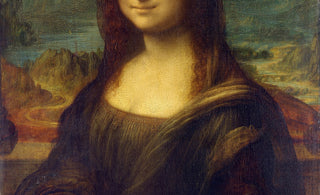
Pretty much anything can be collectable: wine, jewellery, cars, and, of course, art. Whether you plan on collecting art for personal reasons or you’re looking to sell collectable art at a later date for a profit, it’s important to understand what makes art collectable.
So, what makes art collectable and what makes one piece of art more collectable than another? That’s what we’re going to explore in this blog post. Read on to find out what makes art collectable and valuable, from the condition of the art to the history of the artist.
The Condition of The Art
The condition of the artwork is an integral factor when determining the collectability of a piece of art. In terms of art, collectables are typically high-quality pieces of art with little to no physical damage. This means that if paintings have sun damage, art prints are slightly torn, or a sculpture is slightly chipped, it may be considered a less profitable option.
That being said, in some cases, art that has been damaged can increase in value and become more collectable. Banksy’s ‘Girl With Balloon’ was shredded at auction in 2018, with the resulting piece being named ‘Love is in the Bin’. Despite being shredded, the piece sold at Sotheby’s in London for £16 million, which is four million pounds more than expected.
The Backstory
One of the most significant factors that can influence the value of a piece of art is its backstory. If the artist or the work of art in question has an interesting backstory. For example, if they have noteworthy achievements, have been the subject of controversy, or had an early death.
One of the reasons for this is that they may have produced less work, and supply and demand would factor into the value of the art. The lives of artists are important to the public. If you’re considering investing in collectable art, our team at Grove Gallery can help you find the right pieces to add to your art collection.
At Grove Gallery, you can purchase collectable art from artists with enticing backstories. For example, Opake dealt with addiction for a large portion of his life but is now sober and channels this into his art.
Opake believes that anyone with addictive tendencies can abuse them, but when harnessed, they can be a gift. Likewise, prominent street artist Stik has an interesting story. He spent some time living in a hostel for the homeless before rising to fame, with one of his works selling for £150,000 at auction.
Provenance
As well as the backstory of the artist, the artwork’s provenance can impact its value. This includes who the art belonged to previously and a documented history of the art.
For example, if a painting previously belonged to a celebrity or was displayed in a prominent museum or art gallery, it will become a more attractive option to add to your art collection, attracting higher offers at art auctions and art fairs. Likewise, if a piece of art was once owned by a notable art collector, it will likely attract much more attention at an art fair.
The Artist’s Popularity
Before purchasing art to add to your collection, you should consider current and historic trends. For example, if an artist is rising in popularity, now may be a good time to make a purchase.
That being said, the general rule of thumb is that the more ‘trendy’ an artist is, the higher the price will be. Blue-chip artwork is one of the most collectable types of art out there. Blue-chip artists have a history of producing art that increases in value; they are prominent names in the art industry.
From Andy Warhol to Pablo Picasso, blue-chip artists are a great investment opportunity. Check out this helpful blog post to learn more about the meaning of blue-chip art.
The Authenticity of The Work
Authentic work is much more collectable than copies. For example, a real Monet piece is going to be much more valuable than a copy. Print editions can also determine the value and collectability of a piece; if an artist has unlimited print editions, they will likely be less valuable than if the artist has limited edition prints.
That being said, it can be difficult to determine the authenticity of a piece of art without expert help. When purchasing art from art fairs or auctions, we recommend that you work with a professional who understands the industry. Read on to learn more about art advisory services.
Work With An Art Advisor
The art world can be difficult to navigate, especially if you’re new to the art market. Whether you’re about to collect art for the first time or you’re a seasoned art investor. We always recommend that you conduct research before purchasing art, or read this helpful guide on everything you need to know about art investments – however, we also recommend that you work with an art advisor too.
At Grove Gallery, we are home to an exceptional art advisory service. Our experts have plenty of industry experience working with clients around the world and can help you begin your art investment journey.
Not only can our art advisors help you understand the art world, find the right piece of art for you at the right time, and make an informed decision, but they can also help you to sell your art for a profit further down the line.
You can learn more about the role of an art advisor here, or download our art investment guide for more information. Our experts can help you generate, on average, between 8% and 12% profit from the art every year, helping you navigate the process from the beginning to the end.
Ultimately, an art advisor can increase the chance of investment success. Visit our London art gallery today to view our pieces in person, or if you wish to learn more, you can contact our team at 020 8103 4905.






